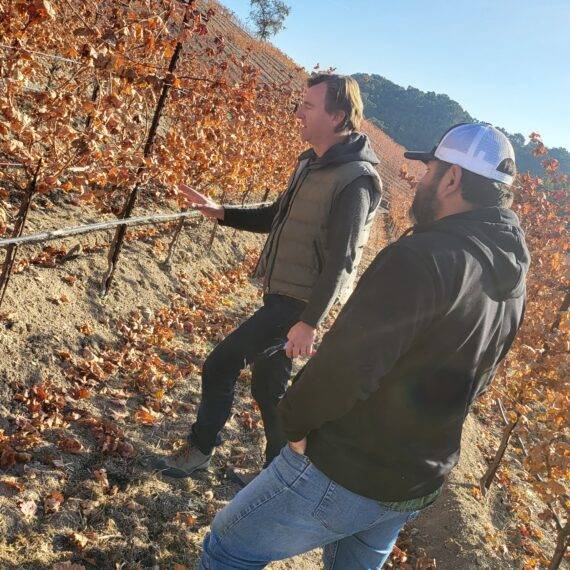The Art of Pruning: Important Decisions at LXV Winery's Armaa.N Vineyard
In the world of winemaking, vineyard management plays a crucial role in the production of high-quality grapes. Pruning is an essential practice that not only shapes the vine but also influences the quantity and quality of the fruit it bears.
At LXV Winery’s vineyard, Armaa.N, significant decisions are being made regarding pruning techniques. We had the opportunity to interview LXV’s consultant winemaker, Fredrick Ammons, to gain insights into their chosen method and its importance. In this blog post, we explore the art of pruning and delve into LXV Winery’s approach at Armaa.N.
What is pruning and why is it necessary for the development of quality grapes?
Pruning is a human intervention technique applied to grapevines to promote fruit production rather than excessive wood growth. It involves the removal of specific parts of the vine, such as canes and spurs, to achieve a balance between canopy growth and fruit production. Pruning serves several crucial purposes, including establishing vine architecture, creating a favorable microclimate around the fruit, facilitating treatments and harvest, and ensuring the long-term health of the vine.
What is the style of pruning implemented at Armaa.N and why was this method chosen?
At Armaa.N, the vineyard team has chosen to implement cane pruning, specifically a mixed guyot method with sap flow consideration, also known as poussard pruning. This method involves using a spur on one side and a cane on the other. The decision to adopt this technique was influenced by the young age of the vineyard, emphasizing the need to build a strong vine architecture for the future.
How does this method compare to traditional methods?
Contrary to what some may perceive as a new approach, the mixed pruning technique employed at Armaa.N is, in fact, a traditional method. The first mention of poussard pruning dates back to 1921, as documented in a book by Laffon. The mixed pruning technique itself is much older and has been practiced for many years. Notably, Fredrick was trained on this method by Michel Duclos, a renowned figure in the industry. The main distinction between mixed pruning and the more common double cordon (double guyot) method is the inclusion of a spur, which ensures the growth of a strong shoot for future pruning. As the vineyard matures, LXV Winery may modify the pruning technique to suit the vigor of the vines.

WHAT OTHER FAMOUS VINEYARDS HAVE IMPLEMENTED THE PRUNING METHOD USED AT ARMAA.N?
The method of mixed pruning with sap flow consideration (poussard) is not exclusive to Armaa.N. LXV Winery’s consultant winemaker, Fredrick Ammons, has worked with several other prestigious vineyards, including Rudd in Oakville and various renowned vineyards in Napa Valley. These vineyards have recognized the benefits of the mixed pruning technique and have incorporated it into their vineyard management practices.
Pruning is a fundamental aspect of vineyard management, shaping the growth, productivity, and overall health of grapevines. At LXV Winery’s Armaa.N vineyard, the use of mixed guyot pruning with sap flow consideration reflects a thoughtful approach to building a strong vine architecture for the future. By employing this traditional method, LXV Winery aims to optimize fruit production and create an environment conducive to the development of the highest quality grapes possible. As the vineyard matures, the pruning technique may evolve to adapt to the changing needs of the vines.


